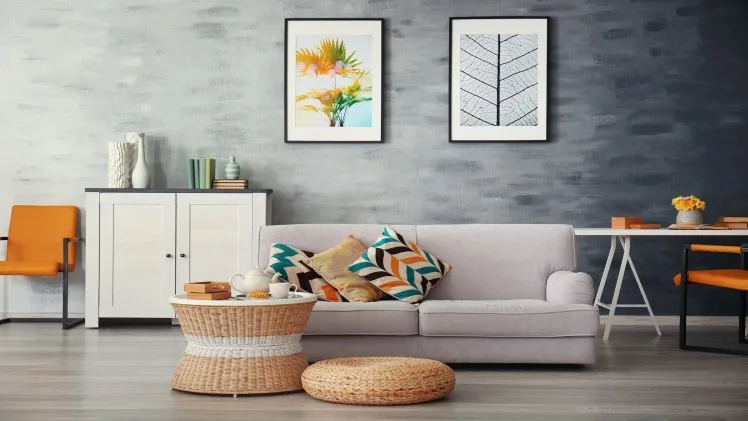Introduction
The world of furniture shopping has undergone a remarkable transformation with the advent of online platforms. Gone are the days when customers had to visit multiple physical stores to find the perfect piece of furniture. Today, online furniture shopping has revolutionized the industry, providing customers with convenience, variety, and accessibility like never before. In this article, we will explore the evolution of online furniture shopping, highlighting the key trends and innovations that have shaped this dynamic industry.
1. The Rise of Online Furniture Retailers
In recent years, the rise of online furniture retailers has been nothing short of remarkable. These e-commerce platforms have disrupted the traditional brick-and-mortar model, offering customers an immersive and seamless shopping experience from the comfort of their own homes. Leading players in this space, such as Wayfair, IKEA, and Amazon, have capitalized on the growing demand for online furniture shopping, providing a vast selection of products and unparalleled convenience.
2. Virtual Reality (VR) and Augmented Reality (AR)
One of the most significant innovations in online furniture shopping is the integration of virtual reality (VR) and augmented reality (AR) technologies. These cutting-edge technologies enable customers to visualize how furniture pieces would look in their own space before making a purchase. By simply using a smartphone or a VR headset, customers can virtually place furniture items in their rooms, explore different colors and styles, and make informed decisions. This immersive experience has significantly reduced the need for returns and enhanced customer satisfaction.
3. Customization and Personalization
Online furniture shopping has brought a new level of customization and personalization to the furniture ecommerce industry. Customers now have the option to tailor furniture pieces to their specific preferences, from choosing the fabric and color to selecting the size and configuration. This level of customization was previously limited to high-end, bespoke furniture stores but is now accessible to a wider audience in the furniture ecommerce market. By offering personalized options, online retailers in the furniture ecommerce sector create a sense of exclusivity and allow customers to express their unique style, making it a key differentiator in this competitive market.
4. User-Generated Content and Social Proof
The power of user-generated content (UGC) and social proof cannot be underestimated in the world of online furniture shopping. Customers heavily rely on reviews, ratings, and testimonials to make purchasing decisions. Online retailers have leveraged this trend by integrating customer reviews and ratings directly on their platforms. Additionally, social media platforms have become virtual showrooms, where customers can find inspiration and see how furniture pieces look in real homes. By incorporating UGC and social proof, online furniture retailers foster trust, enhance the shopping experience, and drive sales.
5. Sustainable and Eco-Friendly Practices
In response to growing environmental concerns, online furniture retailers have embraced sustainable and eco-friendly practices. Many companies now offer furniture made from responsibly sourced materials, recycled materials, or renewable resources. Furthermore, some online retailers have implemented eco-friendly packaging and shipping practices to reduce their carbon footprint. By adopting sustainable practices, these companies not only appeal to environmentally conscious customers but also contribute to a greener future.
6. Artificial Intelligence (AI) and Machine Learning (ML)
Artificial intelligence (AI) and machine learning (ML) have played a pivotal role in transforming online furniture shopping, especially with the incorporation of advanced tools like the furniture visualizer. These cutting-edge technologies enable retailers to analyze vast amounts of data, predict customer preferences, and offer personalized recommendations, enhancing the overall user experience in furniture ecommerce. With the integration of furniture visualizer, customers can virtually place furniture items in their rooms, explore different colors and styles, and make informed decisions. This immersive experience not only reduces the need for returns but also boosts customer satisfaction in the competitive furniture ecommerce market. Additionally, AI-powered chatbots and virtual assistants with furniture visualizer capabilities provide instant customer support, answering queries, and guiding customers through the shopping process, further streamlining operations for furniture ecommerce companies. By leveraging AI, ML, and the furniture visualizer, online furniture retailers enhance their competitive advantage, offering a seamless and personalized shopping experience to their customers.
7. Enhanced Delivery and Returns Experience
Delivery and returns logistics have always been crucial pain points in the furniture industry. However, online furniture retailers have made significant strides in improving the delivery and returns experience. Many companies now offer faster and more reliable delivery options, including same-day or next-day delivery. Moreover, hassle-free returns policies and flexible pickup options have reduced customer apprehensions about buying furniture online. These improvements in the delivery and returns process have made online furniture shopping more convenient and trustworthy.
Conclusion
Online furniture shopping has evolved into a thriving industry, driven by technological advancements and changing consumer preferences. From virtual reality to customization options, user-generated content to sustainable practices, the online furniture shopping experience has undergone a remarkable transformation. By embracing these trends and innovations, furniture e-commerce companies have not only enhanced customer satisfaction but also expanded their reach and disrupted the traditional retail model. As we move forward, it will be exciting to see how the industry continues to evolve and shape the future of furniture shopping.



